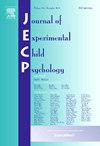不同文化和语言的儿童对在安静和咿呀噪音中编码的口语叙述的记忆情况
IF 1.8
2区 心理学
Q3 PSYCHOLOGY, DEVELOPMENTAL
引用次数: 0
摘要
多说话者噪音会妨碍儿童的语言处理能力,对听第二语言的儿童的影响可能比听第一语言的儿童更大。有证据表明,多讲者噪音还可能妨碍儿童的记忆保持和学习。共有 80 名不同文化和语言背景的 7 至 9 岁儿童在两种听力条件下聆听了叙述:安静和多人交谈噪音(信噪比 +6dB)。重复回忆(即时回忆和延迟回忆)的测量间隔为 1 周。保持率的计算方法是立即回忆和延迟回忆之间每道题回忆准确率的差异。此外,还对工作记忆能力进行了评估,并对儿童的学校语言(瑞典语)接触程度进行了量化。与安静环境相比,在噪音环境中编码的叙事的即时回忆率较低。在延迟回忆过程中,两种听力条件下的叙述回忆效果相似。学校语言接触程度越高、工作记忆能力越强的儿童,其叙述回忆能力总体上越好,但这些因素与听力条件或保持效果无关。根据多选题的测量,多语种咿呀学语的噪音不会影响不同文化和语言背景的小学生对口语叙述的记忆。虽然与嘈杂的听力条件相比,安静的听力条件下的编码效果更好,但在记忆巩固和再巩固的过程中,细节很可能会丢失。本文章由计算机程序翻译,如有差异,请以英文原文为准。
Culturally and linguistically diverse children’s retention of spoken narratives encoded in quiet and in babble noise
Multi-talker noise impedes children’s speech processing and may affect children listening to their second language more than children listening to their first language. Evidence suggests that multi-talker noise also may impede children’s memory retention and learning. A total of 80 culturally and linguistically diverse children aged 7 to 9 years listened to narratives in two listening conditions: quiet and multi-talker noise (signal-to-noise ratio +6 dB). Repeated recall (immediate and delayed recall), was measured with a 1-week retention interval. Retention was calculated as the difference in recall accuracy per question between immediate and delayed recall. Working memory capacity was assessed, and the children’s degree of school language (Swedish) exposure was quantified. Immediate narrative recall was lower for the narrative encoded in noise than in quiet. During delayed recall, narrative recall was similar for both listening conditions. Children with higher degrees of school language exposure and higher working memory capacity had better narrative recall overall, but these factors were not associated with an effect of listening condition or retention. Multi-talker babble noise does not impair culturally and linguistically diverse primary school children’s retention of spoken narratives as measured by multiple-choice questions. Although a quiet listening condition allows for a superior encoding compared with a noisy listening condition, details are likely lost during memory consolidation and re-consolidation.
求助全文
通过发布文献求助,成功后即可免费获取论文全文。
去求助
来源期刊

Journal of Experimental Child Psychology
Multiple-
CiteScore
4.50
自引率
7.70%
发文量
190
期刊介绍:
The Journal of Experimental Child Psychology is an excellent source of information concerning all aspects of the development of children. It includes empirical psychological research on cognitive, social/emotional, and physical development. In addition, the journal periodically publishes Special Topic issues.
 求助内容:
求助内容: 应助结果提醒方式:
应助结果提醒方式:


